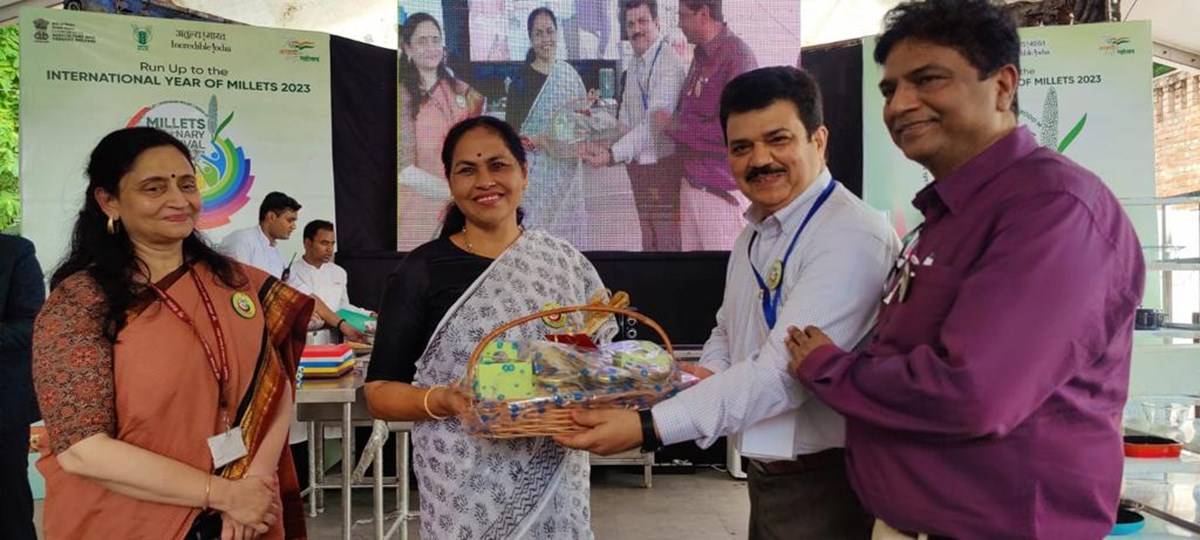
‘Millets Culinary Carnival’ is being organized by the Ministry of Agriculture and Farmers Welfare from 29 to 31 July 2022 at Dilli Haat INA, New Delhi. Shobha Karandlaje, Minister of State for Agriculture and Farmers Welfare, attended the event along with senior MoA&FW officials. On July 29th, at 2 p.m., the event began with Bajra Food Stalls, Infographics, Bakery Product Food Display (Indian and Mexican Cuisine), Street Play, and On-the-Spot Audience Quiz, and Panel Discussion.
Millets have a wide range of adaptability because they can grow from the coastal regions of AP to moderately high altitudes in the NE states and hilly regions of Uttarakhand. Millets can withstand changes in moisture, temperature, and soil type, ranging from heavy to sandy infertile lands. Millet, for example, is a whole grain. An excellent source of nutrition, freely available and right under our noses, but largely ignored. Millet, despite being a staple of our diet for many generations, was largely forgotten until recently.
The Green Revolution encouraged and subsidized the production of rice & wheat, which were refined to look better under the influence of the West. Unfortunately, over-refining removed the nutritious bran, leaving only the easy-to-digest kernel, which easily converts to starch and sugar.
Millets, on the other hand, are high in dietary fibre, which aids in the reduction of blood glucose levels and the improvement of insulin response. Fibre also regulates digestion speed, aids nutrient absorption, and fills you up so you don't feel hungry as often.
Millet Farming:
While 14 percent of our population is malnourished, millet can help reduce nutritional deficiency. Millet can not only help meet nutritional needs, but it is also a 'hardy crop' that can feed a large population. Furthermore, there will be global warming and significant changes in our climatology in the coming years. In such a case, millet cultivation will be able to elevate farmers above other agricultural crops.
Support Sustainable Agriculture:
Millets are environmentally friendly, and by eating them, we encourage farmers in arid and semi-arid areas to grow crops that are best suited to those environments.
Surprisingly, many farmers use a mixed cropping system, which boosts on-farm biodiversity and sustainability. This method boosts farm productivity by improving soil fertility and making plants stronger, allowing them to withstand pests and diseases.









